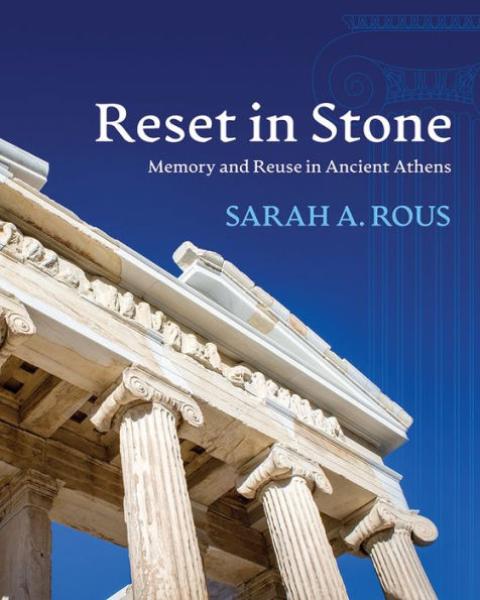Description
Ancient Athenians were known to reuse stone artifacts, architectural blocks, and public statuary in the creation of new buildings and monuments. However, these construction decisions went beyond mere pragmatics: they were often a visible mechanism for shaping communal memory, especially in periods of profound and challenging social or political transformation.
Sarah Rous develops the concept of upcycling to refer to this meaningful reclamation, the intentionality of reemploying each particular object for its specific new context. The upcycling approach drives innovative reinterpretations of diverse cases, including column drums built into fortification walls, recut inscriptions, monument renovations, and the wholesale relocation of buildings. Using archaeological, literary, and epigraphic evidence from more than eight centuries of Athenian history, Rous's investigation connects seemingly disparate instances of the reuse of building materials. She focuses on agency, offering an alternative to the traditional discourse on spolia. Reset in Stone illuminates a vital practice through which Athenians shaped social memory in the physical realm, literally building their past into their city.
This book examines the various ways ancient Athenians purposefully reused stone artifacts, objects, and buildings in order to shape their own and their descendants' collective ideas about their community's past and its bearing on the present and future. The book introduces the concept of "upcycling" to refer to this intentionally meaningful reuse, where evidence is preserved of an intentionality behind the decision to re-employ a particular object in a particular new context, often with implications for the shared memory of a group. Utilizing archaeological, literary, and epigraphic evidence, this investigation connects seemingly disparate cases of upcycling over eight centuries of Athenian history, treating the city as a continuously evolving cultural community. In establishin g upcycling as a distinct phenomenon of intentionally meaningful reuse, this study offers a process- and agency-focused alternative to the traditional discourses on spolia and reuse, while also making a substantial contribution to the growing field of memory studies by identifying a crucial component within the overall "work of memory" within a community. Through an original interdisciplinary approach, the book illuminates a vital practice through which Athenians shaped social memory in the physical realm, literally building their history into their city.
Sarah Rous develops the concept of upcycling to refer to this meaningful reclamation, the intentionality of reemploying each particular object for its specific new context. The upcycling approach drives innovative reinterpretations of diverse cases, including column drums built into fortification walls, recut inscriptions, monument renovations, and the wholesale relocation of buildings. Using archaeological, literary, and epigraphic evidence from more than eight centuries of Athenian history, Rous's investigation connects seemingly disparate instances of the reuse of building materials. She focuses on agency, offering an alternative to the traditional discourse on spolia. Reset in Stone illuminates a vital practice through which Athenians shaped social memory in the physical realm, literally building their past into their city.
This book examines the various ways ancient Athenians purposefully reused stone artifacts, objects, and buildings in order to shape their own and their descendants' collective ideas about their community's past and its bearing on the present and future. The book introduces the concept of "upcycling" to refer to this intentionally meaningful reuse, where evidence is preserved of an intentionality behind the decision to re-employ a particular object in a particular new context, often with implications for the shared memory of a group. Utilizing archaeological, literary, and epigraphic evidence, this investigation connects seemingly disparate cases of upcycling over eight centuries of Athenian history, treating the city as a continuously evolving cultural community. In establishin g upcycling as a distinct phenomenon of intentionally meaningful reuse, this study offers a process- and agency-focused alternative to the traditional discourses on spolia and reuse, while also making a substantial contribution to the growing field of memory studies by identifying a crucial component within the overall "work of memory" within a community. Through an original interdisciplinary approach, the book illuminates a vital practice through which Athenians shaped social memory in the physical realm, literally building their history into their city.
Last updated on
Product Details
- University of Wisconsin P Brand
- Nov 12, 2019 Pub Date:
- 0299322807 ISBN-10:
- 9780299322809 ISBN-13:
- 392 Pages
- 10.1 in * 8.2 in * 1.2 in Dimensions:
- 2 lb Weight:




